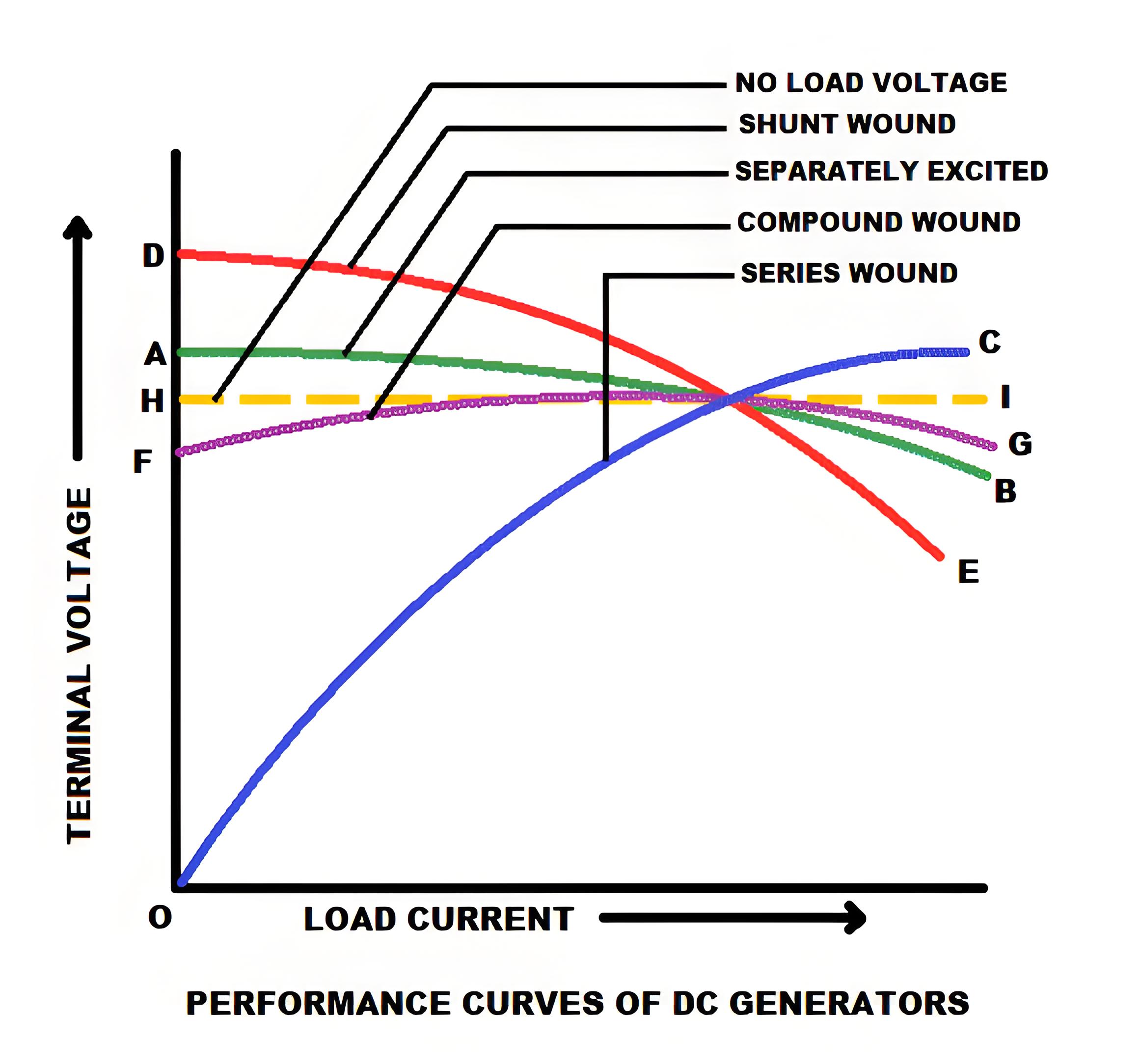DC Generators Performance Curves
Performance Curves Definition
Performance curves of a DC generator are graphs that show how the output voltage changes as the load current varies from no load to full load. These are also known as characteristic curves. These curves help us understand the voltage regulation of different types of DC generators. Better performance is indicated by lower voltage regulation.
Separately Excited DC Generator
Though this type of DC generators are rarely used due to its cost for the separate excitation but the performance of these DC generators are quite satisfactory. In separately excited DC generators, the terminal voltage as the load increases and the load current started to flow.
There is slight drop in the terminal voltage due to armature reaction and IR drop but these drop can be eliminated by increasing field excitation and then we can get constant terminal voltage. In the diagram below, the curve AB is showing this characteristic.
Series Wound DC Generator
In series DC generators, the terminal voltage at no load is zero because no current flows through the field winding. As the load increases, the output voltage rises. The terminal voltage varies widely with small changes in load current. Due to armature reaction and ohmic drop in the armature winding, the output voltage is lower than the generated voltage.
Shunt Wound DC Generator
In shunt wound DC generators, there is always some voltage at no load due to the shunt field winding. As the load increases, the terminal voltage drops quickly because of strong demagnetizing armature reaction and resistance drop. This drastic reduction in terminal voltage leads to a decrease in load current, resulting in poor performance of this type of generators.
Compound Wound DC Generator
At no load, the performance curve of this type of DC generator is same as that of shunt field generators because at no load, there is no current in the series field winding. When the load increases, then the terminal voltage drops due to the shunt DC generator, but the voltage rise in the series DC generator compensates the voltage drop. For these reason the terminal voltage remains constant. The terminal voltage can also make higher or lower by controlling the amp-turns of the series field winding. In the diagram below, the curve FG is showing this characteristic.

The Electricity Encyclopedia is dedicated to accelerating the dissemination and application of electricity knowledge and adding impetus to the development and innovation of the electricity industry.













